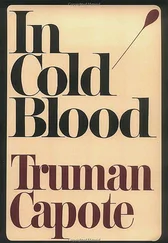The safety index would work as follows. Consider some activity which results in a certain number of deaths per year; say, automobile driving: one American in 5,300 dies each year due to a car crash. The safety index associated with automobile driving is thus a relatively low 3.7, the logarithm of 5,300. More generally, if one person out of X dies as a result of some given activity each year, the safety index for that activity is simply the logarithm of X. Thus, the higher the safety index, the safer the activity in question.
(Since people and the media are sometimes more interested in danger than in safety, an alternative approach might be to define a danger index equal to 10 minus the safety index. A 10 on such a danger index would then correspond to a safety index of 0-certain death; and a low danger index of 3 would be equivalent to a high safety index of 7, or one chance in 10 7of dying.)
According to the Centers for Disease Control, smoking results in an estimated 300,000 premature deaths annually in the United States, which is equivalent to one American in 800 dying each year due to heart, lung, and other diseases caused by smoking. The logarithm of 800 is 2.9, and thus the safety index for smoking is even lower than that for driving. A more graphic way to describe the number of such preventable deaths is to note that each year seven times as many people die from cigarette smoking as were killed in the entire war in Vietnam.
Automobile driving and smoking have safety indices of 3.7 and 2.9, respectively. Contrast these small values with the safety index of being kidnapped. It's estimated that fewer than 50 American children are kidnapped each year by strangers, and the incidence of kidnapping is thus about one in 5 million, resulting in a safety index of 6.7. Remember that the bigger the number, the smaller the risk, and that for every unit increase in the safety index, the risk declines by a factor of 10.
The virtue of such a coarse logarithmic safety scale is that it provides us, and particularly the media, with an order-of-magnitude estimate of the risks associated with various activities, illnesses, and procedures. There is a possible problem, however, since the index doesn't clearly distinguish incidence from likelihood. An activity may be very dangerous but quite rare, and thus would result in few deaths and have a high safety index. For example, few people die as a result of high-wire acrobatics between skyscrapers, an activity which is nevertheless not safe.
A slight refinement must therefore be made in the index, by considering only those people who are likely to engage in the activity in question. If one out of every X of them dies due to the activity, then the safety index of the activity would be the logarithm of X. On this basis, the safety index of high-wire acrobatics between skyscrapers might be a very low 2 (estimating that one out of every 100 such daredevil acrobats doesn't make it across). Likewise, playing Russian roulette each year (one chamber in six containing a bullet) has a safety index of less than 1, approximately 0.8.
Activities or illnesses whose safety indices are greater than 6 should be considered quite safe, being equivalent to less than one chance in a million per year. Anything with a safety index of less than 4 should be considered warily, being equivalent to a more than one chance per 10,000 per year. Publicity, of course, tends to obscure these numbers, but like the Surgeon General's warning on cigarette packages, the figures would eventually begin to filter into the public consciousness. Victim-oriented reporting would have a less misleading impact if the safety index were kept firmly in mind. Isolated but vivid tragedies involving a few people should not blind us to the fact that myriad prosaic activities may involve a much higher degree of risk.
Let's look at a few more examples. The 12,000 American deaths due to heart and circulatory disease each week translate into an annual rate of one death per 380, for a safety index of 2.6. (If one is a nonsmoker, the safety index for heart and circulatory diseases is considerably higher, but we're only interested in shorthand approximations here.) The safety index for cancer is a slightly better 2.7. An activity in the marginal area is bike riding: one American in 96,000 dies each year in a bicycle crash, for a safety index of about 5 (actually, somewhat lower, since relatively few people ride bikes). In the rare category, it's estimated that one American in 2,000,000 is killed by lightning, for a safety index of 6.3; whereas one in 6,000,000 dies from a bee sting each year, for a safety index of 6.8.
The safety index varies over time, death from influenza and pneumonia going from a safety index of approximately 2.7 in 1900 to approximately 3.7 in 1980. Over the same period, the risk of death from tuberculosis went from 2.7 to approximately 5.8. Variations between countries are to be expected- the safety index for homicide being approximately 4 in the United States and between 6 and 7 in Great Britain, whereas malaria's index is orders of magnitude lower in most of the world than it is in the United States. Comparable economies of expression can be obtained by comparing the high safety index associated with nuclear power with the relatively low safety index for burning coal.
In addition to the ready perspective it offers on relative risk, the safety index underscores the obvious fact that every activity carries some risk. It provides the rough answer to the crucial question: How much?
Whatever the merits of such a safety index, I think the establishment of statistical ombudsmen by television networks, news magazines, and major newspapers would be a welcome and effective step in combating innumeracy in the media. An ombudsman would scan the news stories, research whatever statistics are mentioned, try to see that they are at least internally consistent, and probe most carefully into a priori implausible claims. Perhaps a regular feature similar to William Safire's New York Times column on usage might consider the worst innumeracies of the week or month. It would have to be quite entertainingly written, however, since, though there's happily a small army of readers interested in verbal niceties, relatively few are interested in similar but often more important numerical nuances.
These matters are not merely academic, and there is a direct way in which the mass media's predilection for dramatic reporting leads to extreme politics and even pseudoscience. Since fringe politicians and scientists are generally more intriguing than mainstream ones, they garner a disproportionate share of publicity and thus seem more representative and significant than they otherwise would. Furthermore, since perceptions tend to become realities, the natural tendency of the mass media to accentuate the anomalous, combined with an innumerate society's taste for such extremes, could conceivably have quite dire consequences.
5 Statistics, Trade-Offs, and Society
There was once a state legislator in Wisconsin who objected to the introduction of daylight saving time despite all the good arguments for it. He maintained sagely that there is always a trade-off involved in the adoption of any policy, and that if daylight saving time were instituted, curtains and other fabrics would fade more quickly.
Sixty-seven percent of the doctors surveyed preferred X to Y. (Jones couldn't be persuaded.)
It's been estimated that, because of the exponential growth of the world's population, between 10 and 20 percent of all the human beings who have ever lived are alive now. If this is so, does this mean that there isn't enough statistical evidence to conclusively reject the hypothesis of immortality?
PRIORITIES-INDIVIDUAL VS. SOCIETAL
This chapter will concentrate on the harmful social effects of innumeracy, with particular emphasis on the conflict between society and the individual. Most of the examples consider some form of tradeoff or balancing of conflicting concerns, and will show how innumeracy contributes to the relative invisibility of these trade-offs, or sometimes, as in the case of the Wisconsin legislator above, to seeing them where they aren't.
Читать дальше












